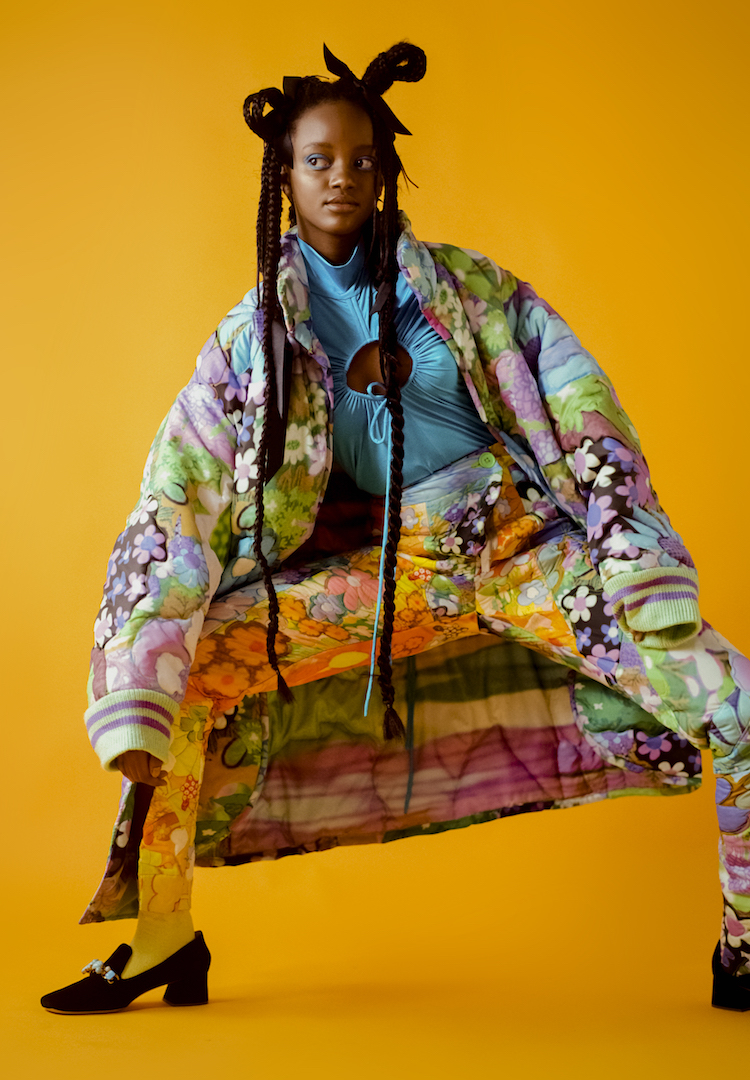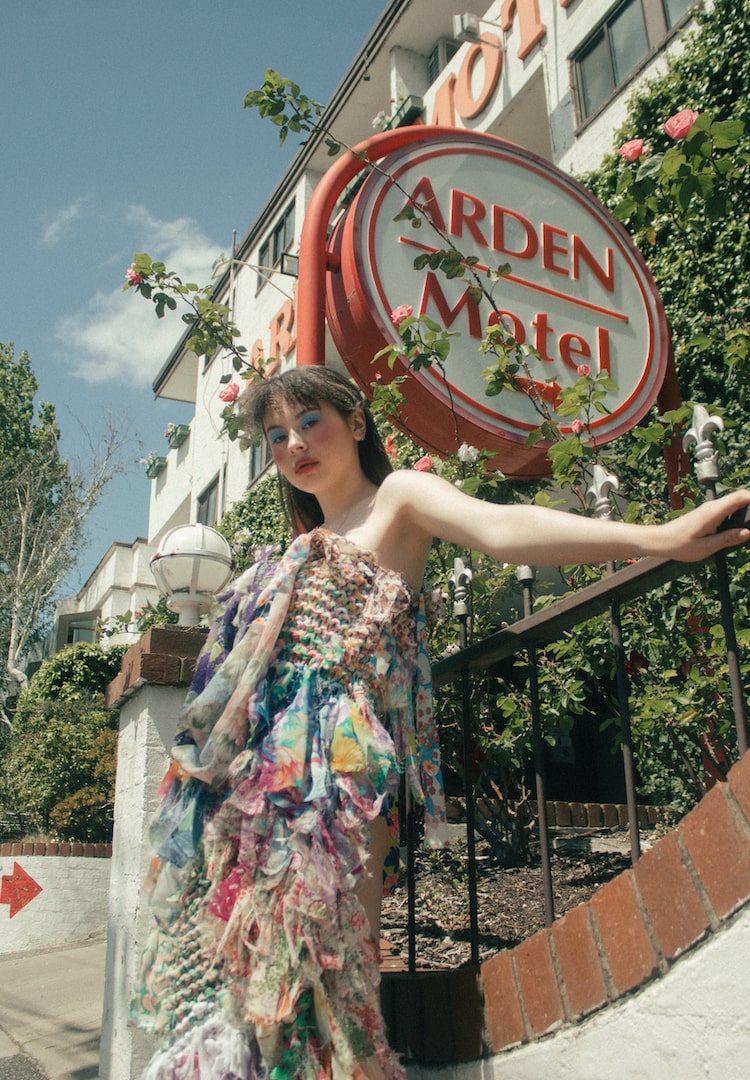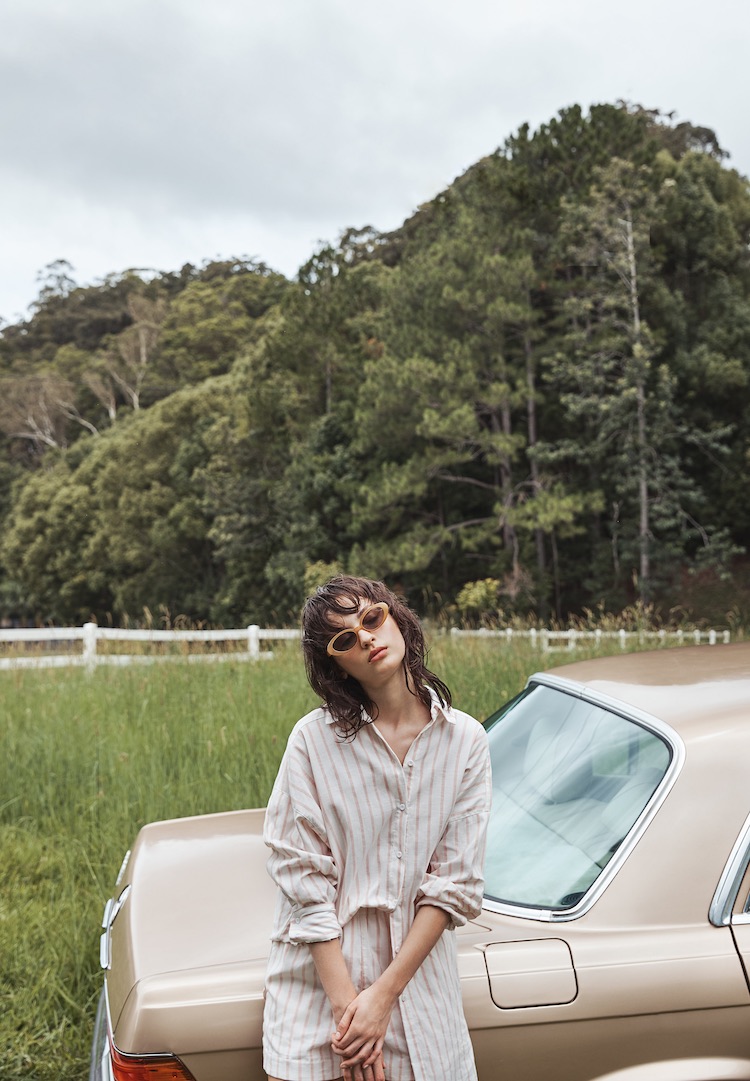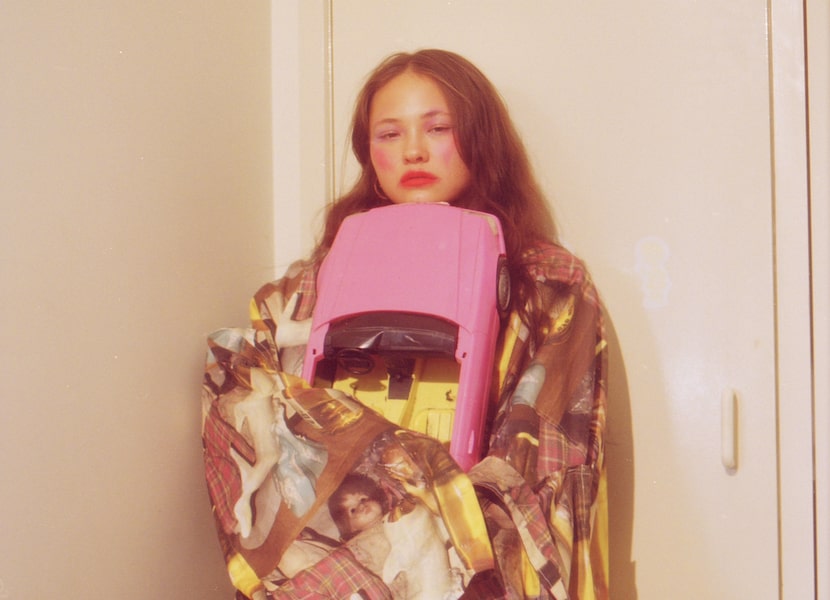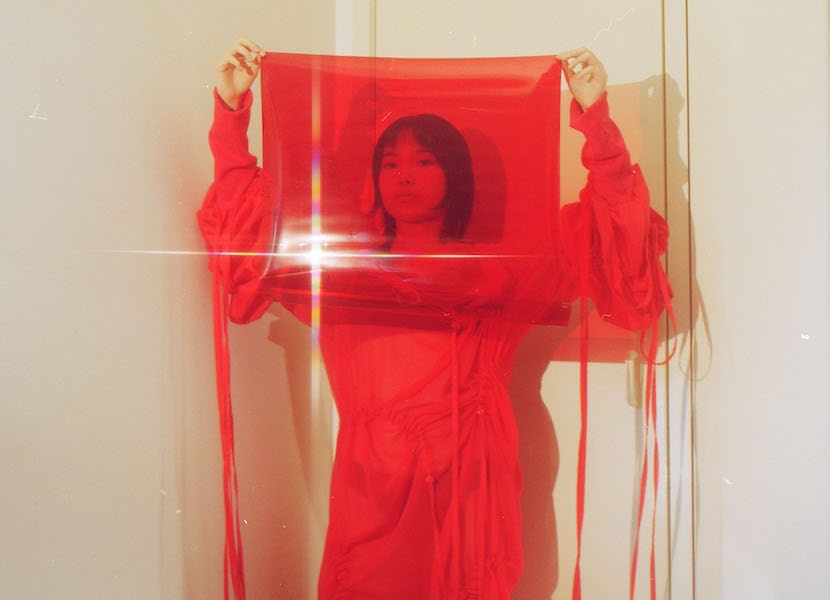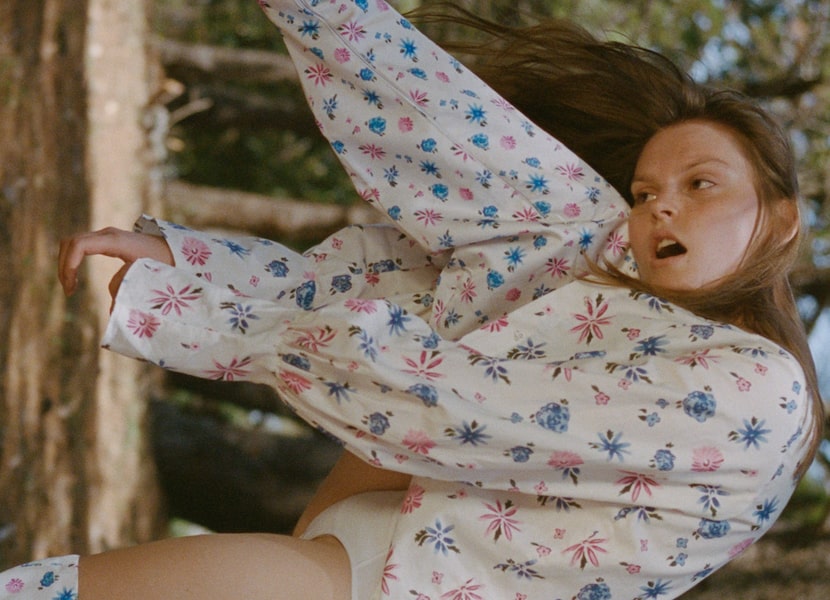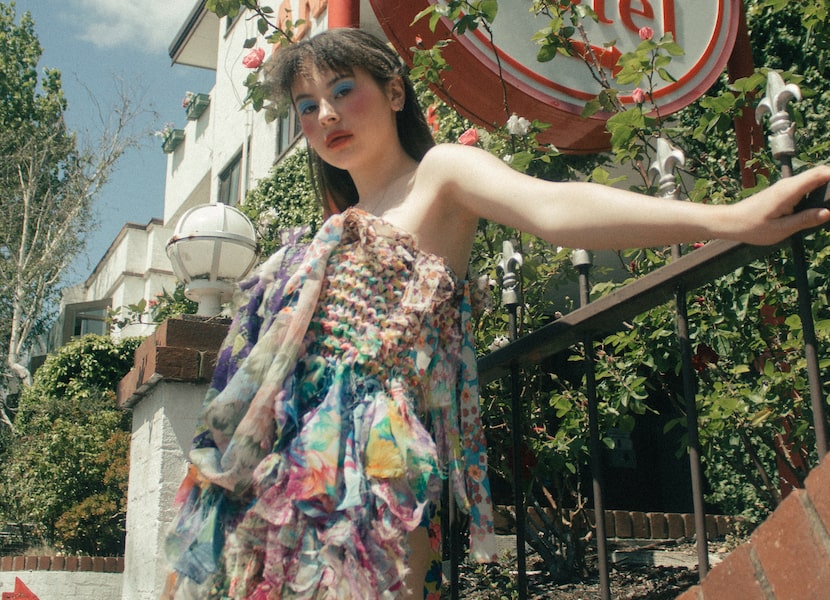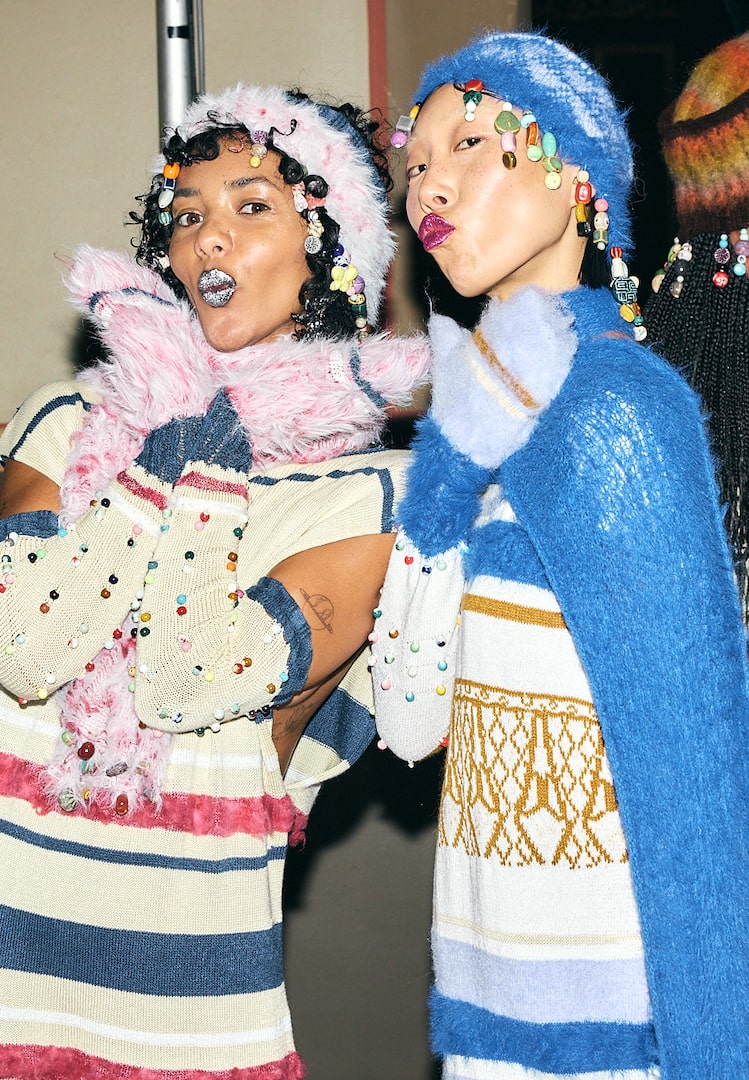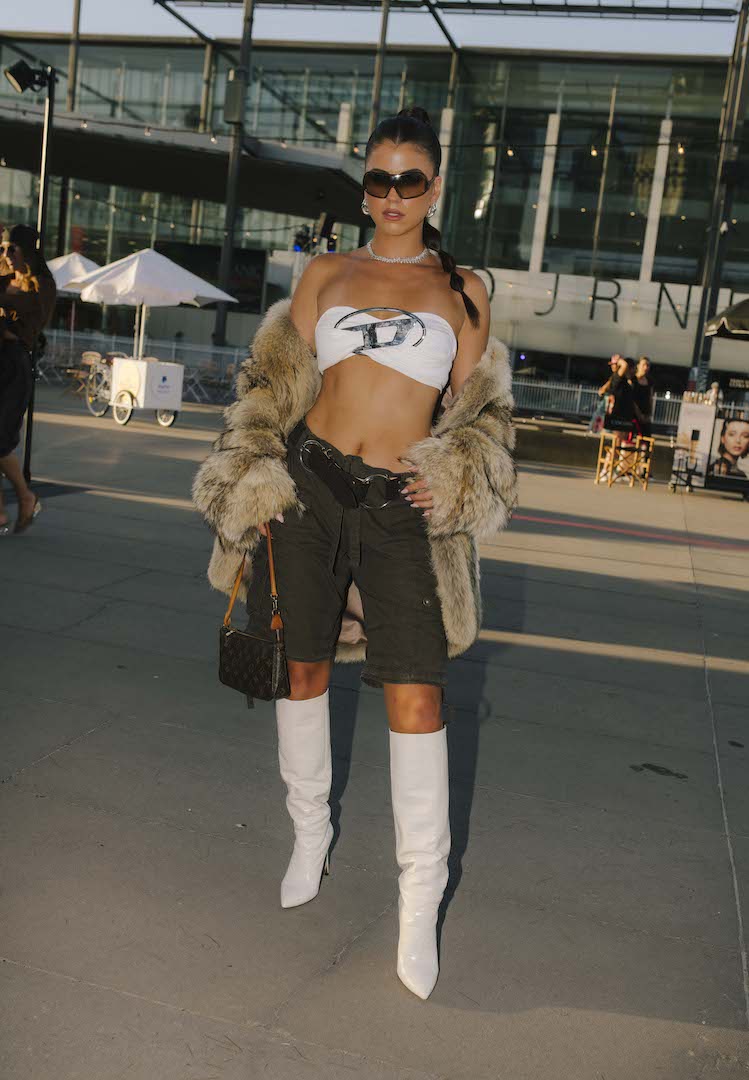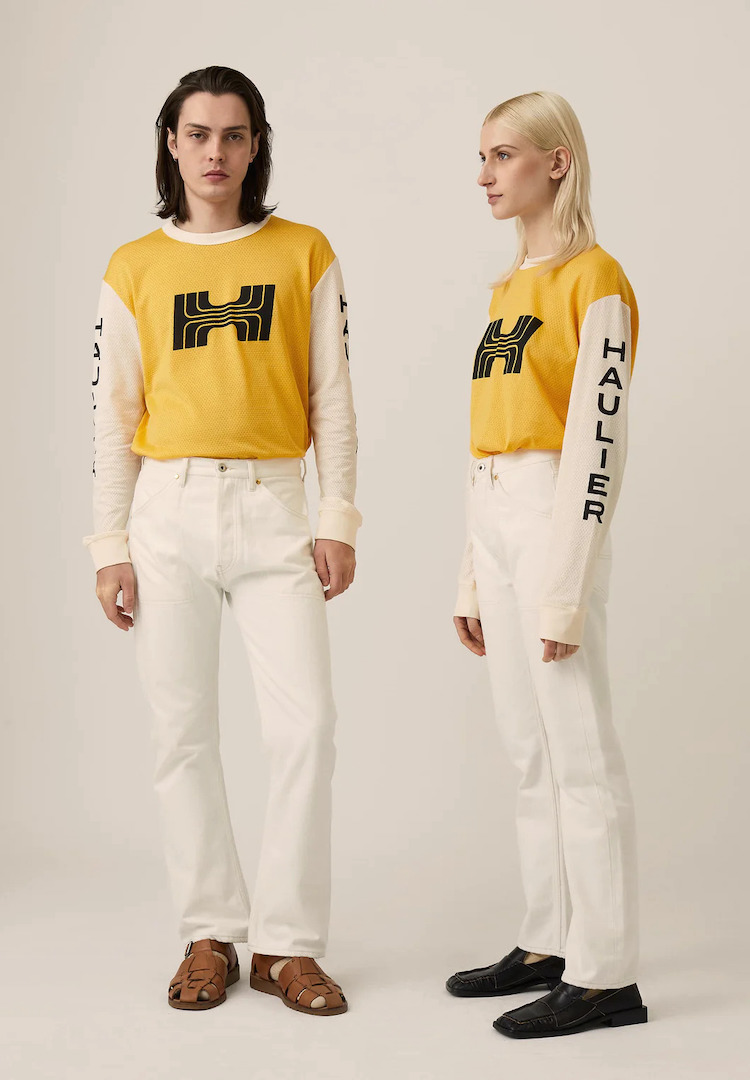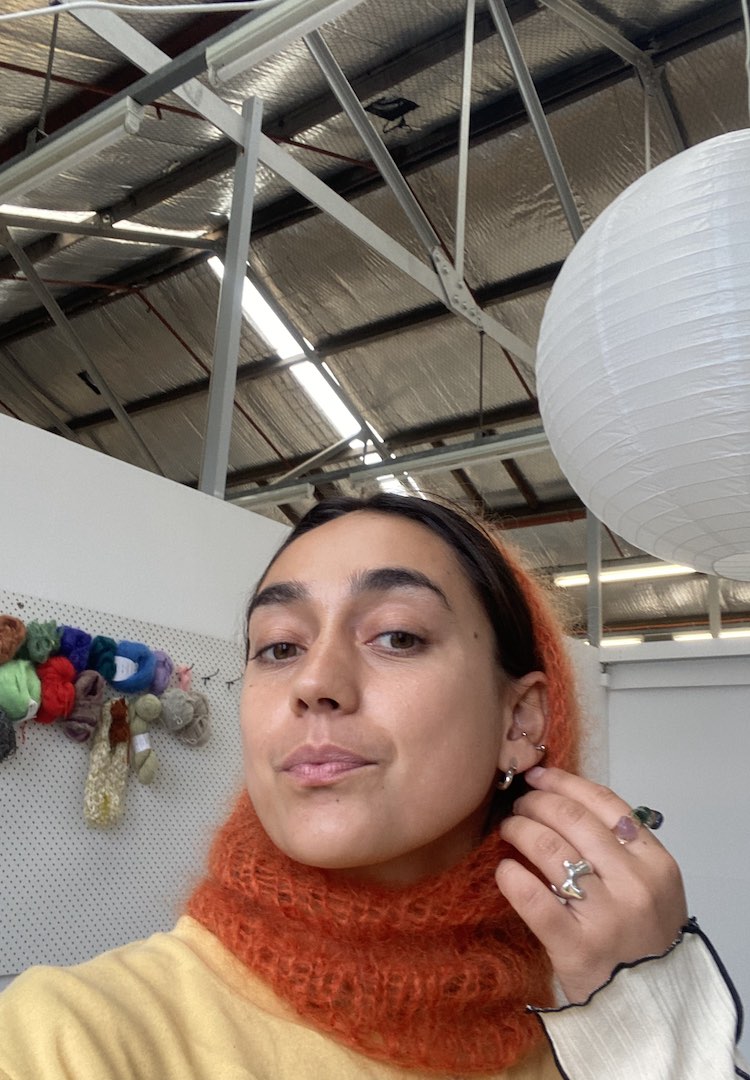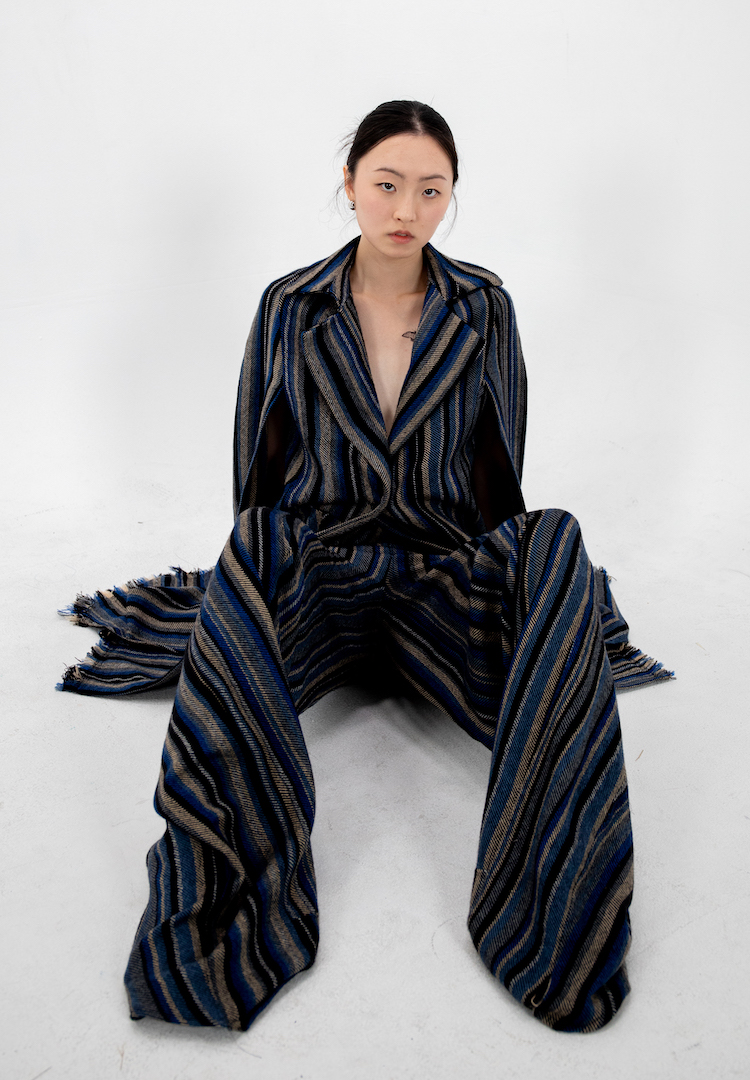Phoebe Pendergast-Jones’ graduate collection is an ode to heartbreak, introspection and sentimentality
Words by Joseph Lew
Who said heartbreak couldn’t be pretty.
When you visualise heartbreak, the last thing you’d expect is Melbourne Fashion Festival National Graduate Showcase finalist Phoebe Pendergast-Jones’ three-metre multi-coloured wedding gown.
Created in response to her first experience of love and loss, her collection Honeymoon Phase acts as a time capsule for her most personal memories, capturing and preserving them in fabric. Because of this, her garments appear timeless, combining the past and the present in a way that feels nostalgic and oddly familiar.
Looking to procrastinate in a productive way? Subscribe here and we’ll send more great reads straight to your inbox.
Although running her label Phoebe’s Angels keeps her pretty occupied, we managed to steal a moment of her time to chat to her about Honeymoon Phase, and how she turned a difficult, deeply personal moment into creative inspiration.
Please introduce yourself to our readers.
I’m Phoebe, I’m 23 years old and I’m a recent graduate of the Fashion Design (Honours) program at RMIT University.
Tell us about your collection.
My collection is called Honeymoon Phase and it’s an exploration of themes of heartbreak and longing. It treads the lines between something quite romantic with light, flowing, almost girly silhouettes, contrasted with a certain roughness. I wanted to see how I could turn the vulnerability of heartbreak into something quite powerful, while looking at how clothes can transform the wearer in the way they feel, the way they walk and the way they move.
Tell us how it all started. What made you decide to go down the fashion design route?
I think my earliest memory was as a seven or eight-year-old saying I wanted to become a fashion designer when I was older, but I don’t think that really manifested itself within me until I was about 14 and I was doing textiles in high school. I think subconsciously it was always there and I’d always really known what this is what I’ve wanted to do – there’s really no doubt about it.
There’s something about the collection that feels quite nostalgic in a sense, such as the coat with the dolls over it. Are there specific memories and experiences behind each piece?
I think my design process has always been intertwined with my everyday life – it’s very personal. I’m always drawing on specific memories that I want to communicate through my design and it’s kind of a way of holding on to the past. I’m a very nostalgic person and I don’t want these specific memories to fade away from me. That piece, for example, is a picture of my bedroom at the time of a relationship I was in, and I thought it would be quite ironic almost to put it all over this huge coat.
What inspired the collection?
I guess when I was talking about heartbreak, I kind of wanted to see it as something quite beautiful in a way. And instead of it being something like “I want to move on from this and get over it as soon as possible”, I wanted to explore this feeling and turn it into something quite loud and colourful and celebrate this emotion.
I was talking to my friends about it and they found it quite interesting because you’re looking at all these themes of sadness and pain and heartbreak and a lot of people want to suppress these feelings, but with my work I’m doing the opposite and turning it into this visual language which is very colourful and strong and bold.
I was going to say, I don’t think many people would have a relationship end and be like, “Fuck it I’m going to make a dress out of it.” Why did you decide to use fashion to process this experience?
When I was going through this heartbreak period I was like, “Oh gosh, I don’t know how to get through this” and people were all telling me that it would take me two or four months to get over someone, but for me, it felt like it was taking a lot longer. And then a friend of mine said that sometimes when you pour these emotions into your work, it can be really cathartic. It’s like as you’re doing all this work, you’re doing it for this person in a sense, and it’s a way of tying all these feelings into a bow. Because I was doing so much work related to my own personal life, by the end of it I felt I was done with these emotions, and it really helped me find some peace with the whole situation. I just thought it was a really beautiful idea to put that heartbreak and a piece of yourself and a piece of this other person into your work as a way of getting through it.
Tell us about the experience of putting together your graduate collection.
One of my looks is a big dramatic dress with a three-metre train on the back of it. I’ve always been interested in how fashion can be quite performative – just depending on what you wear you can walk differently or feel differently – and I wanted something quite theatrical so when someone wears it, it makes them look powerful. I wanted this moment to occur when the air lifts underneath the back of the dress and you see this big fanned out skirt with a big colourful print on the fabric. That dress was a bit of a challenge obviously – I think there were 13 metres of silk on the dress and because I was putting a print on it, I had to make sure the placement was correct. For it to have that moment of the dress fluttering as the model walked, I needed to make sure the weight of the fabric was correct, so there was a lot of prototyping. It was a very engineered dress and a very technical challenge. As for the rest of my collection, I just had a lot of fun mixing print and things that wouldn’t necessarily go together, and forcing these print and colour relationships.
How did you stay creatively inspired throughout the lockdown period?
I went on a lot of walks. I’m kind of a dramatic emotional person as you can probably tell, and I’d listen to music that reminded me of this relationship. I really indulged in these emotions and while I was walking and listening to the music, it helped my ideas to flow. Music for me is such an important part of the process because it’s one of those things that really triggers memory and past experiences, like a certain song will remind you of a very specific moment in time. I think I had a very defined soundtrack I would listen to throughout the process of making the collection.
What’s next for you?
It has always been my dream to do my Masters in London, so since graduating, I’ve been working really hard on that and putting together a few applications. I’ve applied for New York as well. My dad’s British so I have a British passport, and it’d be really nice to go back there and be in that environment, but as you know, it’s such a strange time and it’s so hard to make any plans for the future because you don’t really know what’s possible in terms of the pandemic.
Find more of Phoebe’s work here.

